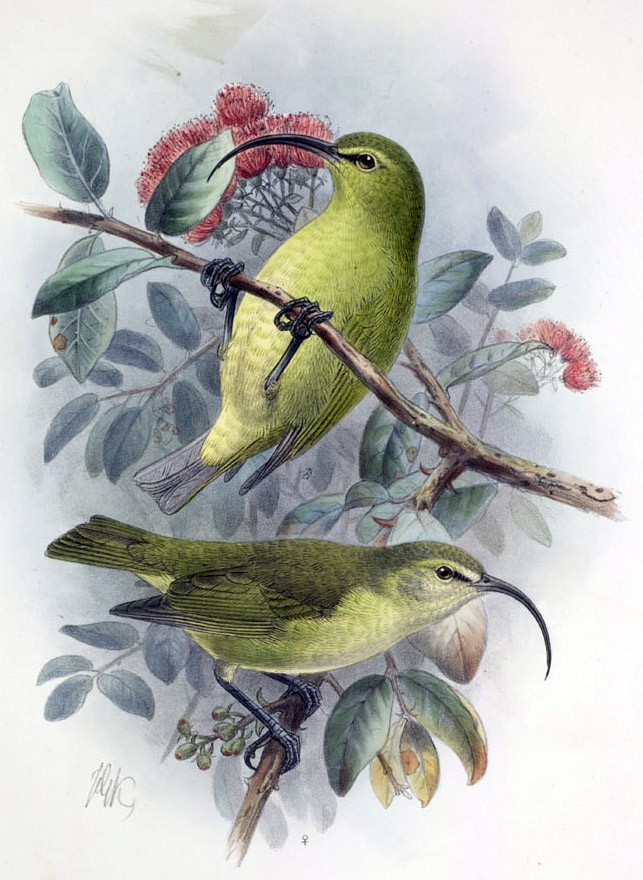Birdfinding.info ⇒ The last incontrovertible record of Lesser Akialoa was the collection of two specimens at Umikoa, north of Mauna Kea, in September 1903. The species was regarded as common across the Big Island well into the 1890s, but then vanished extremely quickly around the turn of the century. There were isolated reports in 1937 and 1940 from Keanakolu, on the northeastern slope of Mauna Kea, also near Umikoa. The 1937 report was of a vocalization identified as an akialoa based on its similarity to the better-known voice of the Kauai Akialoa, and the 1940 report was visual. These reports seem inherently dubious in light of the species’s sudden catastrophic islandwide population collapse forty years earlier.
Lesser Akialoa †
Akialoa obscura
Extinct. Formerly endemic to the Big Island of Hawaii.
Before its decline it was known from foothills forests throughout the island, mainly at elevations between around 350 and 800 m, but reportedly occurred at least occasionally up to around 2,000 m.
Identification
A medium-large honeycreeper with a long, scimitar-shaped bill, bright-olive upperparts, and yellow underparts. Somewhat smaller than the other akialoas, its bill was the shortest relative to its body size and the most strongly decurved.
The female was duller overall than the male. Immatures were somewhat duller still, brownish-olive above and yellowish-white below.

Lesser Akialoa. © Bernice Pauahi Bishop Museum
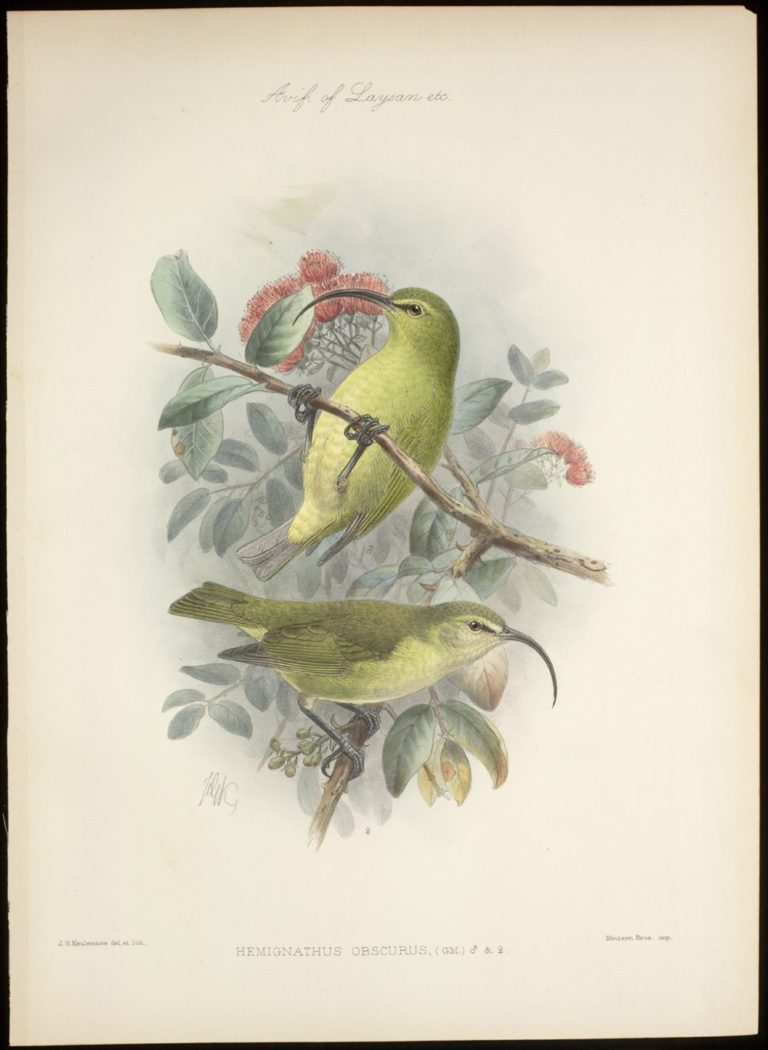
Lesser Akialoa, male and female. John Gerrard Keulemans, 1900
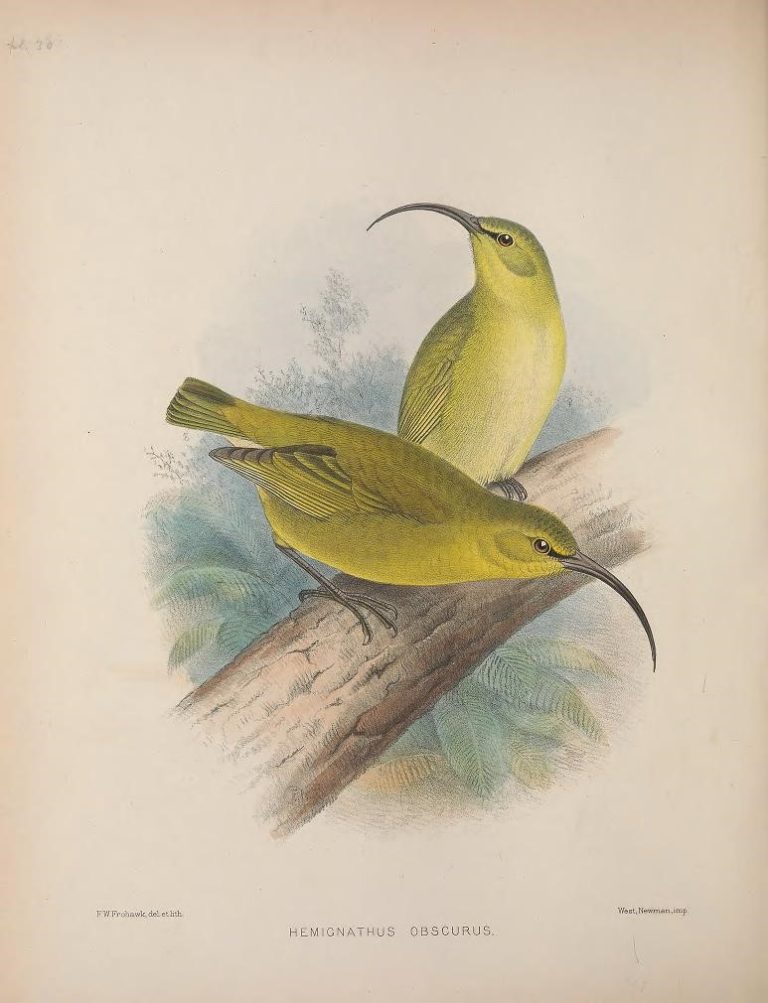
Lesser Akialoa, male and female. Frederick Frohawk, 1899

Lesser Akialoa, ventral view. (Specimen ID: RMNH.AVES.110013; Big Island, Hawaii.) © Naturalis Biodiversity Center
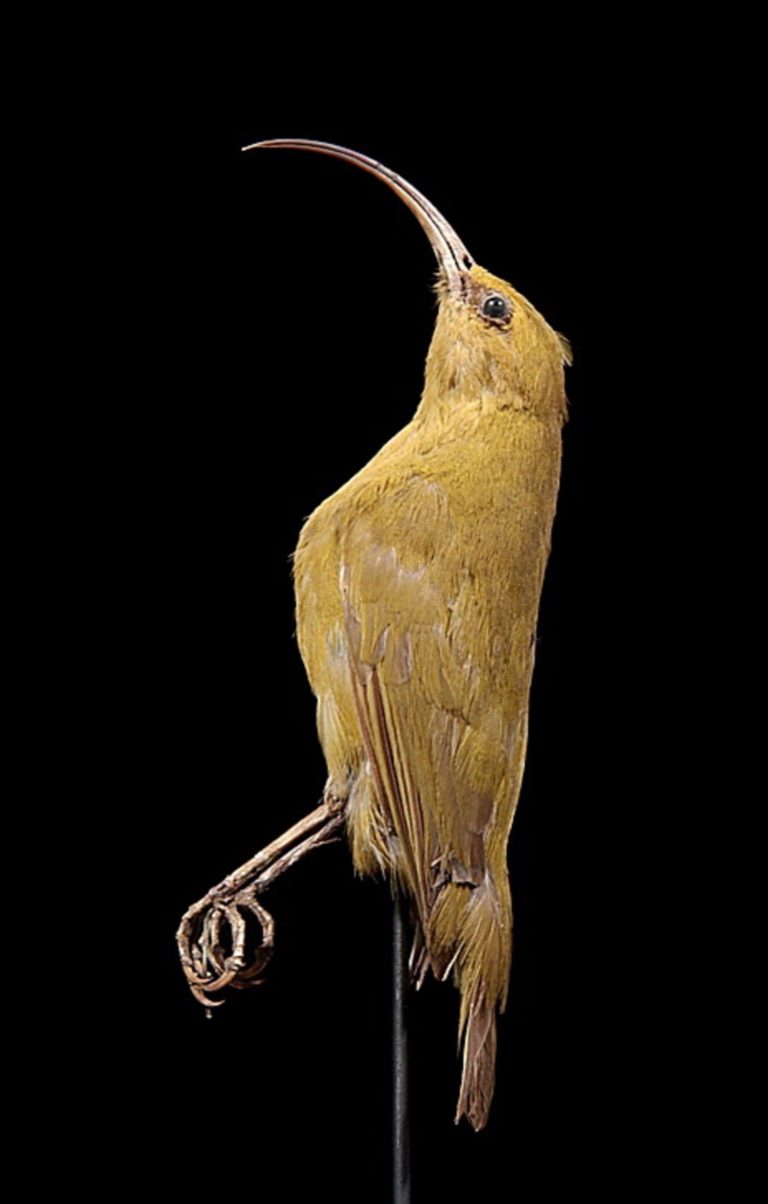
Lesser Akialoa, side view. (Specimen ID: RMNH.AVES.110013; Big Island, Hawaii.) © Naturalis Biodiversity Center
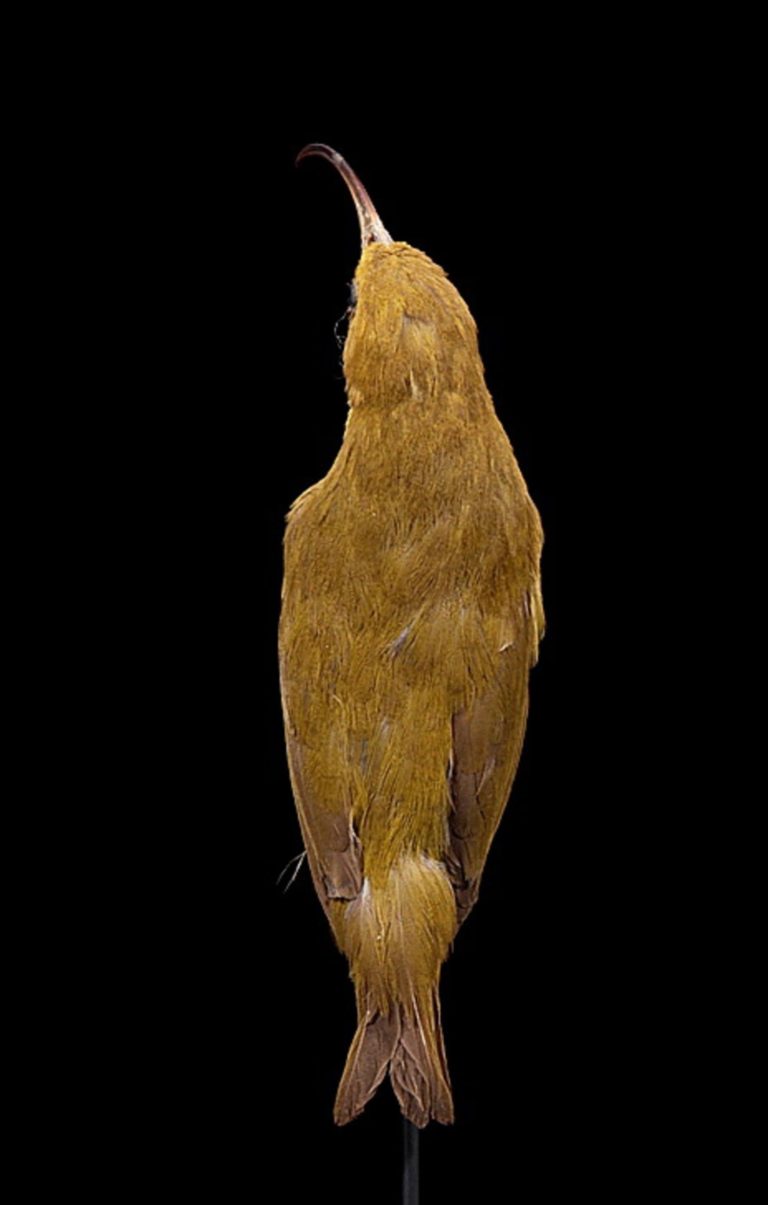
Lesser Akialoa, dorsal view. (Specimen ID: RMNH.AVES.110013; Big Island, Hawaii.) © Naturalis Biodiversity Center
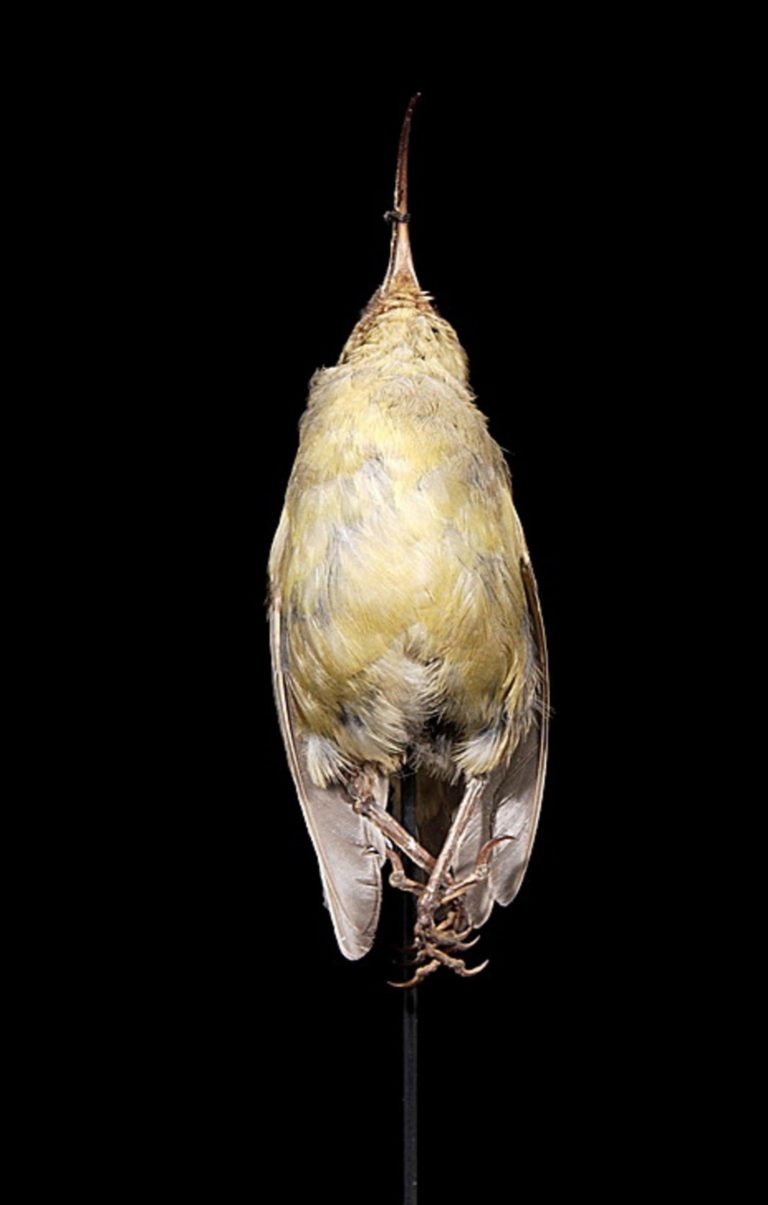
Lesser Akialoa, immature male, ventral view. (Specimen ID: RMNH.AVES.110014; Kau, Big Island, Hawaii; June 1895.) © Naturalis Biodiversity Center

Lesser Akialoa, immature male, side view. (Specimen ID: RMNH.AVES.110014; Kau, Big Island, Hawaii; June 1895.) © Naturalis Biodiversity Center
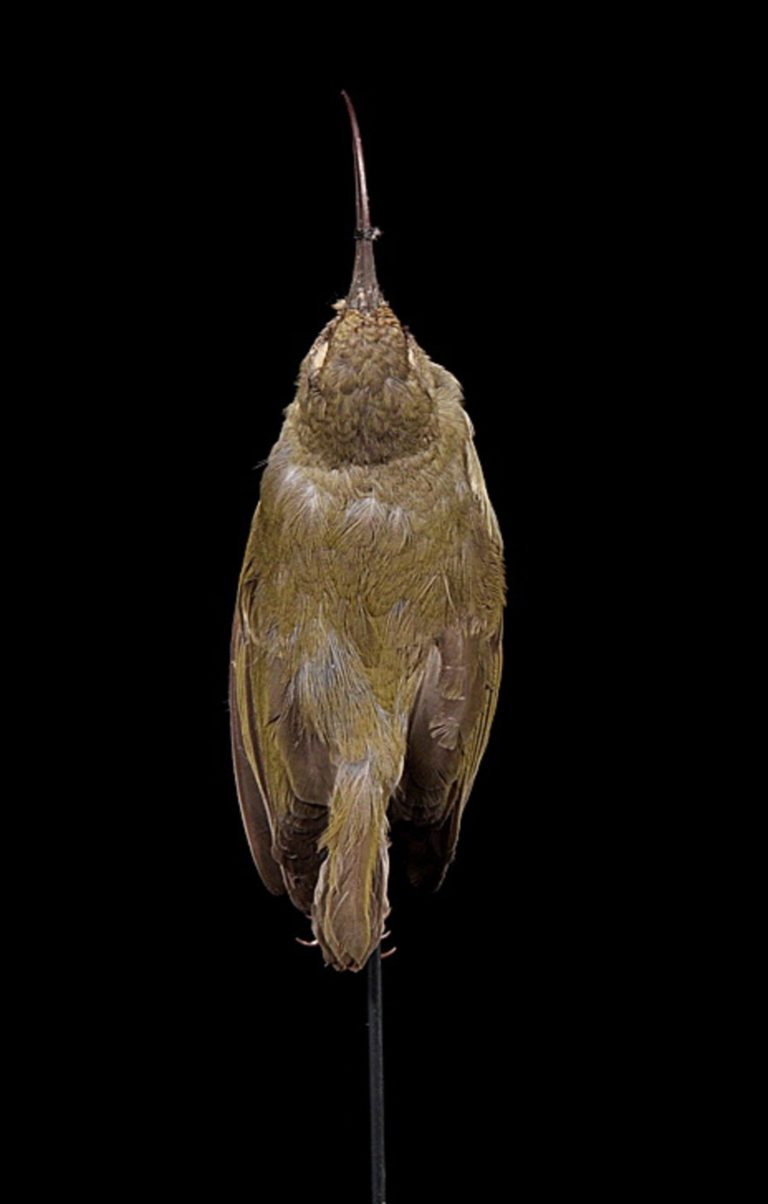
Lesser Akialoa, immature male, dorsal view. (Specimen ID: RMNH.AVES.110014; Kau, Big Island, Hawaii; June 1895.) © Naturalis Biodiversity Center
Notes
Monotypic species. Formerly considered conspecific with Kauai, Oahu, and Maui Nui Akialoas, known collectively as the Akialoa (Hemignathus ellisianus).
References
BirdLife International. 2017. Akialoa obscura (amended version of 2016 assessment). The IUCN Red List of Threatened Species 2017: e.T22728910A119550231. https://dx.doi.org/10.2305/IUCN.UK.2017-3.RLTS.T22728910A119550231.en. (Accessed May 20, 2020.)
Hume, J.P. 2017. Extinct Birds (Second Edition). Bloomsbury Publishing PLC, London.
Pratt, H.D. 2005. The Hawaiian Honeycreepers: Drepanidinae. Oxford University Press.
Pyle, R.L., and P. Pyle. 2017. The Birds of the Hawaiian Islands: Occurrence, History, Distribution, and Status. Version 2 (January 1, 2017). http://hbs.bishopmuseum.org/birds/rlp-monograph/. B.P. Bishop Museum, Honolulu, Hawaii.
